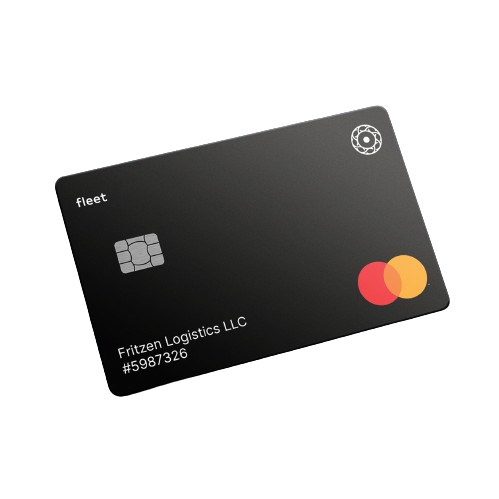How to Calculate Fuel Surcharge: Step-by-Step
To run a profitable business, whether that’s a delivery management or trucking company, it’s important to manage your expenses carefully. In the professional driving industry, fuel is one of the most significant costs to include in your business budget.
Due to political and manufacturing reasons, fuel costs can fluctuate daily. The cost of fuel has been breaking records this year, putting a strain on many players within the transportation industry. One way to offset these volatile fuel costs is to charge a fuel surcharge fee.
If you’re wondering how to calculate diesel fuel surcharge fees, you’re in the right place. Below, we’ll explain how to conduct these calculations step-by-step so you can optimize your fuel management.
What is fuel surcharge?
So, what is fuel charge exactly? Fuel surcharges are fees you can bill to your shipping clients to offset the additional cost of fuel that arise due to fuel price fluctuations. According to the United States Energy Information Administration (EIA), fuel prices can be impacted by the following factors:
- The cost of crude oil (which is the main indicator of a diesel fuel price)
- Oil refining expenses
- Fuel station costs and profit margins
- Taxes
Fuel surcharges became widely used in the mid-2000s after diesel prices reached a record-breaking $4 per gallon. Today, fuel prices are breaking new records, making accurate fuel reimbursements more important than ever before.
By charging fuel surcharge fees, you can insulate your driving business from fuels' ever-present price volatility. Without them, you may struggle to make ends meet in such a volatile market.
{{CTA}}
How to Calculate Fuel Surcharge Fees
Currently, there are no legal regulations regarding the calculation of the fuel surcharge rate. In turn, you can establish your own calculation methods and surcharge thresholds.
You don’t need to file paperwork with any government entities to charge fuel surcharges. You simply inform your clients ahead of time and clearly outline your surcharge fees in your contracts and invoices.
Aside from that, you can decide how and when you will implement your fuel surcharge rates. For instance, you can determine:
- The type of fuel surcharge calculation you use – Some companies calculate fuel surcharge rates using ratio-based calculations, while others use percentage-based calculations. The method you choose to calculate your fuel surcharges is up to you.
- Your fuel surcharge fee thresholds – Some transportation companies only start charging fuel surcharge fees once fuel prices have increased or decreased by a certain amount (10%, 50 cents, etc.). Other transportation companies may employ fuel surcharges to account for any level of price volatility.
Steps for Calculating Fuel Surcharges
Now that you understand the basics of how fuel surcharges work, let’s review the steps involved in their calculation.
Step 1: Review the EIA’s Regional Fuel Prices
Before you can calculate fuel surcharges, you need to know the updated fuel price. You can find this information on the EIA website.
The EIA updates its fuel prices every Monday. Its prices are broken down by fuel type (gasoline and diesel) and location (region, state, or city). In addition to checking the current base fuel price, you can use this resource to review historical average weekly prices of fuel going back decades.
Here are the two numbers you’ll want to extract from these datasets when calculating fuel surcharges:
Step 2: Determine Your Vehicles’ Fuel Consumption Per Mile
Fuel prices aren’t the only metrics you’ll need to conduct your calculation. You’ll also need to know your vehicle’s average fuel consumption per mile.
In the transportation industry, the average driving range for a Class 7 or Class 8 vehicle is 4.51 to 6.47 miles per gallon. Some vehicles can reach over 9 miles per gallon if they’re aerodynamic and driven efficiently.
You can evaluate the consumption of your fleet using a simple formula. Just divide the number of miles you drove by the number of gallons of fuel you put into your tank over a set period of time.
Step 3: Calculate Your Fuel Surcharge Fee Per Mile
Once you know your vehicle’s fuel usage per mile, you’re ready to learn how to calculate fuel surcharge per mile. This metric lets you know how much more fuel costs for every mile you drive than you initially calculated using the fuel base rate.
Here’s a simple formula you can use to determine this metric:
(Actual fuel price - base fuel price) / miles per gallon fuel consumption
Fuel Surcharge Per Mile Calculation Example
Let’s apply this formula to a look at a real-world example:
- You have a delivery where the fuel price at the time of scheduling was $4.50
- During the week of delivery, the actual fuel price is $5.15
- The vehicle you used during delivery gets 6 miles per gallon
After plugging these numbers into the formula, you get:
(5.15 - 4.50) / 6
(0.65)/6
0.10
In other words, the fuel surcharge fee per mile should be 10 cents.
Step 4: Calculate your Fuel Surcharge Fee For the Entire Trip
Once you know your fuel surcharge fee per mile, you can determine the final fee for the trip. All you have to do is multiply your surcharge fee per mile by the total number of miles driven during the delivery.
Let’s say the delivery from the previous example was 3,568 miles in total. After multiplying this number by 10 cents, you discover that the delivery costs you an additional $356.80 in fuel.
You can pass this extra expense on your client as a fuel surcharge fee.
Now that you understand the numbers and formulas involved in fuel surcharge fee calculations, you can also explain to your clients why these amounts are being added to their final invoice.
Step 5: Use Fuel Surcharge Percentage-Based Fees
So far, we’ve discussed the long-form formula for calculating fuel surcharges. This method is well-suited for trips where you can easily determine the average fuel price purchased throughout the drive.
But what about long-haul journeys where you must refuel in several different regions on different days? In this case, you may want to charge a standard fuel fee instead. The benefit of this method is that your surcharge fee calculation will be simple and streamlined. You won’t need to average fuel costs from every region of your trip.
The downside of this method is that the surcharge fee may not be quite as accurate as the other method, depending on price fluctuations in the fuel market at that time.
Percentage-Based Calculation Example
Let’s say that you conduct a drive that spans 2,000 miles. The base fuel cost of this drive is $1,500.
In your contract, you let clients know you charge a 5% fuel surcharge fee for all long-haul shipments.
After multiplying the base fuel cost ($1,500) by 1.05%, you charge the client a final fuel cost of $1,575, with $75 going toward your fuel surcharge fee.
Step 6: Keep Detailed Fuel Purchase Records
Efficient fuel tracking is crucial if you want to charge accurate and fair fuel surcharge fees.
For this reason, you’ll want to maintain clear documentation every time you purchase fuel. Doing so is easy when you use a flexible fuel card, like the one we offer at AtoB.
{{CTA}}
Transform Your Fuel Management With an AtoB Fuel Card
The increased cost of fuel can affect any transportation company, especially if they’re trying to reduce fleet expenses. Fuel surcharges may help mitigate those costs. At AtoB, our fuel card can help you save money every time you visit the pump, whether you stop by a local mom-and-pop gas station or a national franchise. In addition to fuel, it can also be used to pay for insurance, tolls, maintenance expenses, and more. Our fuel card also offers:
- Discounts of up to 25 cents per gallon
- VISA-based universal acceptance
- Top-notch fraud protection
- No personal guarantee requirements
- No hidden fees
With an AtoB secured fuel card, managing your fleet is a breeze. It allows you to set spending limits for other drivers, track and analyze your monthly expenditures, and pay using credit or debit, depending on the state of your current cash flows.
Are you ready to start tracking and saving on your fuel? Sign up for an AtoB fuel card today.
Sources:
Reuters. As fuel prices rise to record highs, governments look for solutions.
The Wall Street Journal. Gasoline Prices Surge Above $4 a Gallon, With No End in Sight.
https://www.wsj.com/articles/the-surge-in-gas-prices-isnt-slowing-down-11646627663
EIA. Factors affecting diesel prices. https://www.eia.gov/energyexplained/diesel-fuel/factors-affecting-diesel-prices.php
EIA. Gasoline and Diesel Fuel Update.
https://www.eia.gov/petroleum/gasdiesel/
Geotab. The State of Fuel Economy in Trucking.
https://www.geotab.com/truck-mpg-benchmark/
Get started with AtoB

Reviewed by
Vedant Khamesra is the driving force behind product management at AtoB. Specializing in strategic partnerships, SMB solutions, and new product development, Vedant seamlessly navigates P&L responsibilities while leading product execution and strategy. He is fueled by AtoB's mission to empower truckers and fleets with intelligent financial tools and services, making their lives easier and more rewarding.
Start saving today


